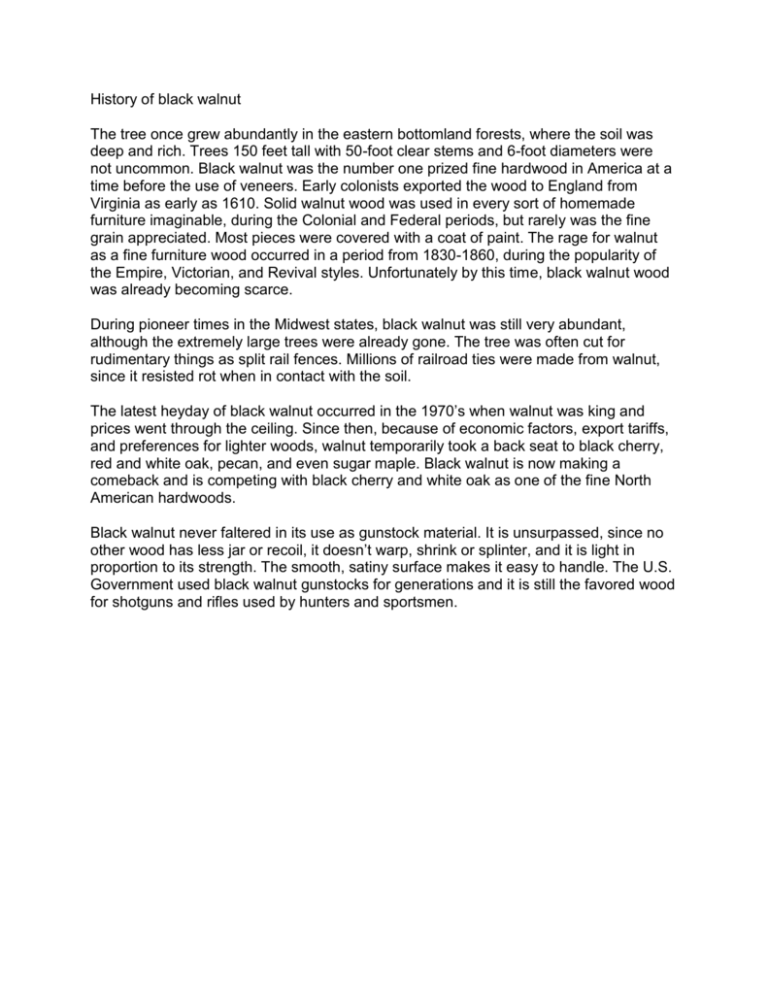History of black walnut
advertisement

History of black walnut The tree once grew abundantly in the eastern bottomland forests, where the soil was deep and rich. Trees 150 feet tall with 50-foot clear stems and 6-foot diameters were not uncommon. Black walnut was the number one prized fine hardwood in America at a time before the use of veneers. Early colonists exported the wood to England from Virginia as early as 1610. Solid walnut wood was used in every sort of homemade furniture imaginable, during the Colonial and Federal periods, but rarely was the fine grain appreciated. Most pieces were covered with a coat of paint. The rage for walnut as a fine furniture wood occurred in a period from 1830-1860, during the popularity of the Empire, Victorian, and Revival styles. Unfortunately by this time, black walnut wood was already becoming scarce. During pioneer times in the Midwest states, black walnut was still very abundant, although the extremely large trees were already gone. The tree was often cut for rudimentary things as split rail fences. Millions of railroad ties were made from walnut, since it resisted rot when in contact with the soil. The latest heyday of black walnut occurred in the 1970’s when walnut was king and prices went through the ceiling. Since then, because of economic factors, export tariffs, and preferences for lighter woods, walnut temporarily took a back seat to black cherry, red and white oak, pecan, and even sugar maple. Black walnut is now making a comeback and is competing with black cherry and white oak as one of the fine North American hardwoods. Black walnut never faltered in its use as gunstock material. It is unsurpassed, since no other wood has less jar or recoil, it doesn’t warp, shrink or splinter, and it is light in proportion to its strength. The smooth, satiny surface makes it easy to handle. The U.S. Government used black walnut gunstocks for generations and it is still the favored wood for shotguns and rifles used by hunters and sportsmen.











